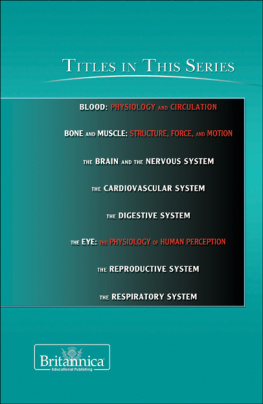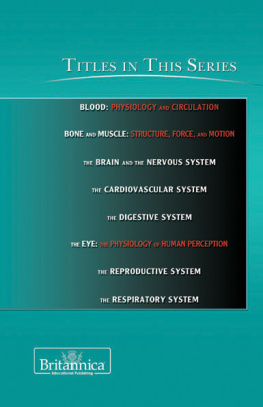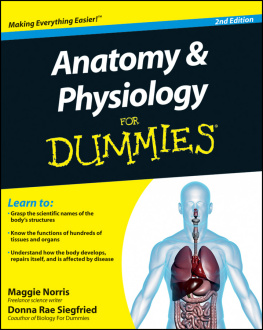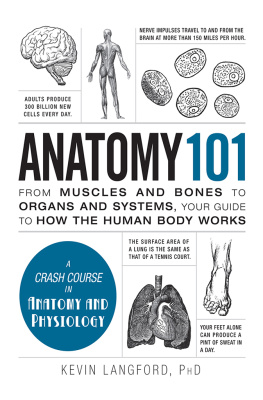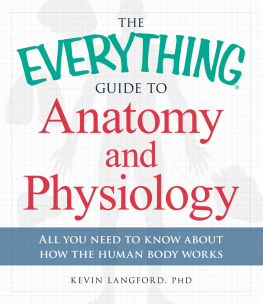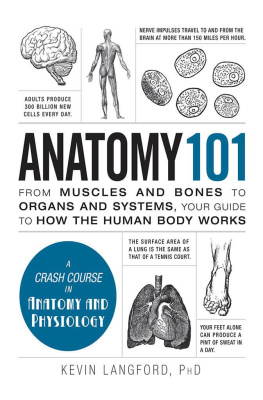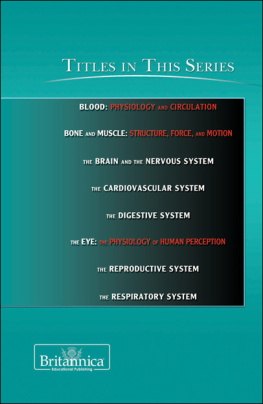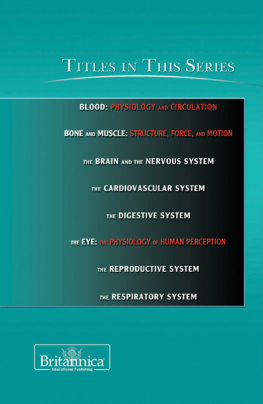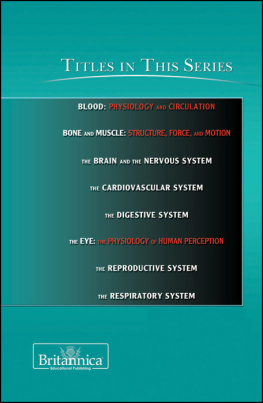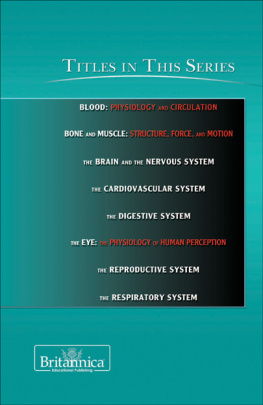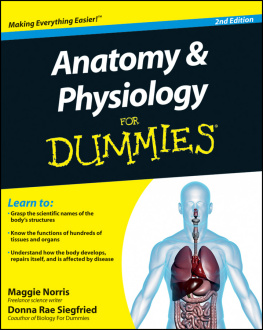THE CARDIOVASCULAR SYSTEM
THE HUMAN BODY
THE CARDIOVASCULAR SYSTEM
EDITED BY KARA ROGERS, SENIOR EDITOR, BIOMEDICAL SCIENCES

Published in 2011 by Britannica Educational Publishing
(a trademark of Encyclopdia Britannica, Inc.)
in association with Rosen Educational Services, LLC
29 East 21st Street, New York, NY 10010.
Copyright 2011 Encyclopdia Britannica, Inc. Britannica, Encyclopdia Britannica,
and the Thistle logo are registered trademarks of Encyclopdia Britannica, Inc. All rights reserved.
Rosen Educational Services materials copyright 2011 Rosen Educational Services, LLC.
All rights reserved.
Distributed exclusively by Rosen Educational Services.
For a listing of additional Britannica Educational Publishing titles, call toll free (800) 237-9932.
First Edition
Britannica Educational Publishing
Michael I. Levy: Executive Editor
J.E. Luebering: Senior Manager
Marilyn L. Barton: Senior Coordinator, Production Control
Steven Bosco: Director, Editorial Technologies
Lisa S. Braucher: Senior Producer and Data Editor
Yvette Charboneau: Senior Copy Editor
Kathy Nakamura: Manager, Media Acquisition
Kara Rogers: Senior Editor, Biomedical Sciences
Rosen Educational Services
Hope Lourie Killcoyne: Senior Editor and Project Manager
Joanne Randolph: Editor
Nelson S: Art Director
Cindy Reiman: Photography Manager
Nicole Russo: Designer
Matthew Cauli: Cover Design
Introduction by Adam Chodosh, M.D.
Library of Congress Cataloging-in-Publication Data
The cardiovascular system / edited by Kara Rogers, senior editor.1st ed.
p. cm.(The human body)
In association with Britannica Educational Publishing, Rosen Educational Services.
Includes bibliographical references and index.
ISBN 978-1-61530-251-2 (eBook)
1. Cardiovascular system. I. Rogers, Kara.
QP101.C2927 2011
612.1dc22
2010001624
Cover www.istockphoto.com/Sebastian Kaulitzki/
P. 12 This view of a human heart reveals the inner structures, or anatomy, including the valves. 3D4Medical.com/Getty Images; p.www.istockphoto.com/Logan Dance.
CONTENTS









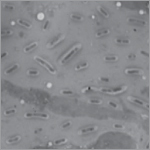


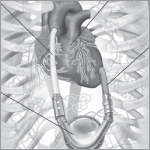

INTRODUCTION

J ohn is a 54-year-old high school AP physics teacher. One spring morning while walking his dog around the block, John developed the sudden onset of crushing chest pain. So severe was the attack that he collapsed in front of his neighbours house. Hearing the dogs frantic barking, the neighbour rushed out, saw that John was in need of immediate medical attention, and ran to call 911. Within minutes John was taken directly to the local hospital by an ambulance. Whisked into the emergency room, a doctor performed an electrocardiogram on John, then diagnosed him as having had a myocardial infarction. (Commonly referred to as a heart attack, this is when heart muscle dies because a blocked artery causes an interruption in blood supply to the heart.) John was then quickly brought to a catheterization laboratory. There, a cardiologist threaded a small catheter into the major blood vessel leading into the blocked artery in Johns heart. By inflating a tiny balloon, the doctor opened the blocked passage, thereby restoring blood flow to Johns heart.
Thanks to that prompt, precise, and practiced attention, John survived, going on to do quite well after what was a near-fatal episode. Although it was a happy ending indeed, the fact that John and far too many others throughout the world suffer such attacks in the first place is a phenomenon science is working to minimize.
The accurate diagnosis and life-saving treatment that John received has evolved over hundreds of years. This volume will put into perspective the foundations of cardiac development and pathophysiology laid out by the forefathers of modern cardiology, guiding readers through the development of diagnostic and therapeutic options that exist today. In addition, the structure and function of the heart and blood vessels as well as the technologies that are used to evaluate and monitor the health of these fundamental components of the human cardiovascular system are described in detail.
The human heart, a complex organ vital to life, pumps blood throughout the body, giving the body the oxygen it needs to function properly. Normally about the size of a fist, the heart is divided into four chambers. The upper chambers, called atria, collect blood returning to the heart. They then empty the blood into the two lower chambers, called ventricles, which are the major pumping chambers of the heart.
The heart is divided into a right side and a left side. The hearts right atrium receives blood from the veins throughout the body and delivers it into the right ventricle. The right ventricle in turn pumps the blood to the lungs to pick up oxygen. The oxygen-rich blood then goes into the left atrium. Finally, the left ventricle pumps the blood through the aorta (the main artery in the body). The blood then continues on its way to all of the body organs and tissues. Four heart valves, located between each chamber, route blood flow in the proper direction. Closure of the cardiac valves produces the lub-dub sounds one hears when listening to the heart.
The other integral system of the heart is its ability to intrinsically conduct electricity. The electrical system is responsible for initiating and coordinating the mechanical activity of the heart. Cardiac electro-physiology is the branch of cardiology in which the electrical and arrhythmic activities of the heart are monitored, measured, studied, and treated.
Next page
